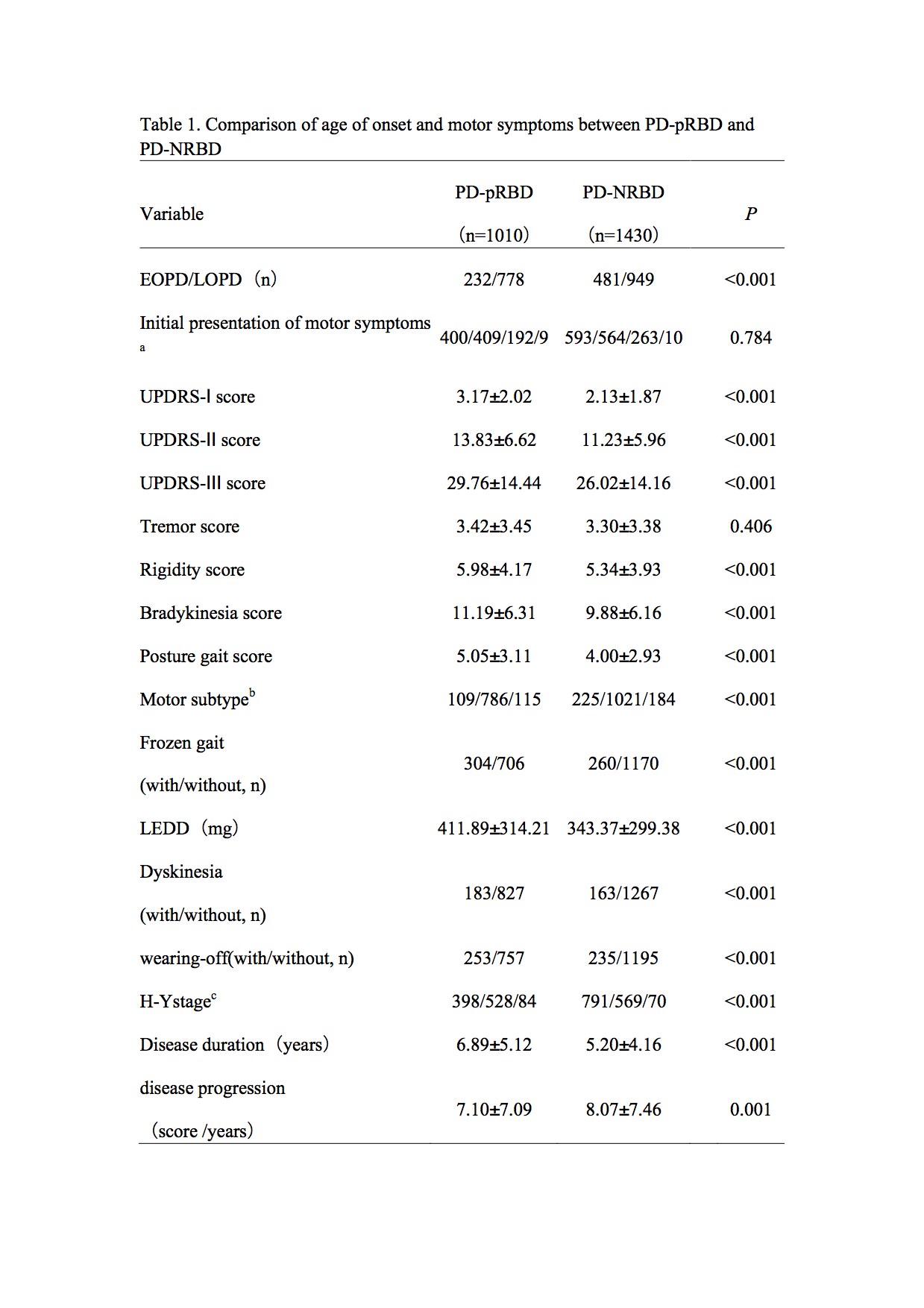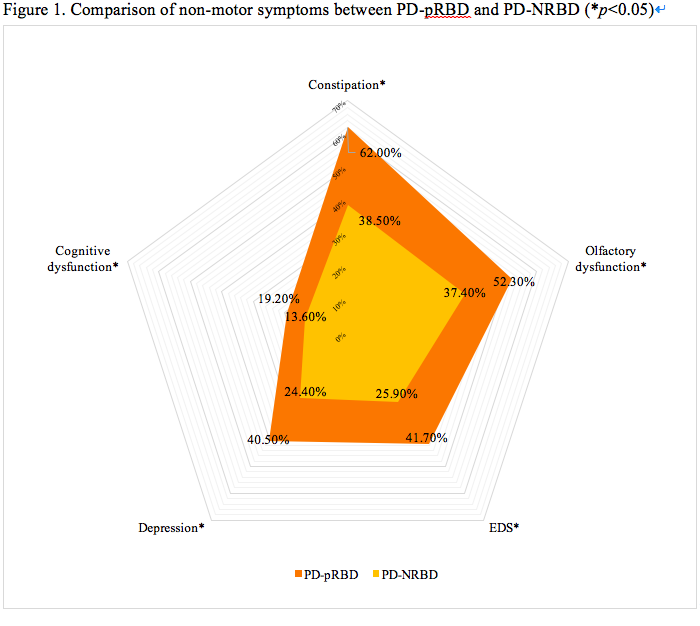Category: Epidemiology
Objective: To investigate the clinical features and associated factors of Parkinson’s disease (PD) patients with probable rapid eye movement sleep behavior disorder (PD-pRBD)
Background: RBD is a common sleep disorder in patients with PD. However, few large-sample researches have focused on the clinical features and risk factors of RBD in Chinese patients. Our study aims to explore the clinical features and related factors of RBD.
Method: A total of 2440 patients with PD were divided into two groups: PD-pRBD and PD without pRBD group (PD-NRBD). Data collection included demographic data, basic clinical history and the assessment of motor and non-motor symptoms. Based on the onset time of pRBD and the motor symptoms in PD, PD-pRBD patients were further divided into pRBD prior to PD (PD-prRBD) and pRBD posterior to PD (PD-poRBD) group. Clinical features were compared between PD-pRBD group and PD-NRBD group, as well as PD-prRBD group and PD-poRBD group. The associated factors of pRBD were also explored.
Results: 1) The prevalence of pRBD was 41.4% (1010 out of the total of 2440) in our cohort. 2) Compared with the PD-NRBD group, the PD-pRBD group had longer disease duration and more severe motor symptoms. And the PD-pRBD group had significantly higher levodopa equivalent dose daily, higher ratio of dyskinesia and wearing-off . The score of non-motor symptom rating scale (NMSS), cognitive impairment, Parkinson disease sleep scale(PDSS) , excessive daytime sleepiness(EDS) , constipation, hyposmia, depression and the PDQ-39 also appeared worse in the PD-pRBD group. 3) Significant differences widely existed between PD-prRBD group and PD-poRBD group, including educational level, motor subtype, disease duration, disease’s progression, UPDRS-II, UPDRS-III, tremor, rigidity, bradykinesia, LEDD, dyskinesia, wearing-off, H-Y stage, PDSS and social support. 4) Late-onset PD (LOPD), long course of disease, high UPDRS-I score, high NMSS-4 score, low PDSS score, constipation and hyposmia were all identified as the risk factors for PD-pRBD.
Conclusion: 1) Comparing with PD-NRBD group, PD-pRBD group have more severe motor symptoms, motor complications, non-motor symptoms and poorer quality of life. 2) LOPD, long disease duration, high UPDRS-I score, high NMSS-4 score, low PDSS score, constipation and hyposmia can be risk factors for RBD in PD. 3) Differences also occur between PD-prRBD group and PD-poRBD group.
To cite this abstract in AMA style:
J. Liu, Y. Xiang, C. Wan, X. Yan, B. Tang, J. Guo. Study on the clinical features of Parkinson’s disease with probable rapid eye movement sleep behavior disorder [abstract]. Mov Disord. 2020; 35 (suppl 1). https://www.mdsabstracts.org/abstract/study-on-the-clinical-features-of-parkinsons-disease-with-probable-rapid-eye-movement-sleep-behavior-disorder/. Accessed December 29, 2025.« Back to MDS Virtual Congress 2020
MDS Abstracts - https://www.mdsabstracts.org/abstract/study-on-the-clinical-features-of-parkinsons-disease-with-probable-rapid-eye-movement-sleep-behavior-disorder/


